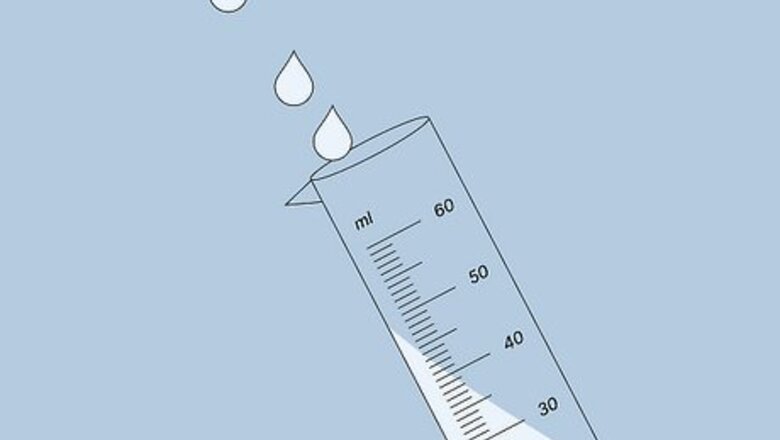
views
Reading the Initial Water Level
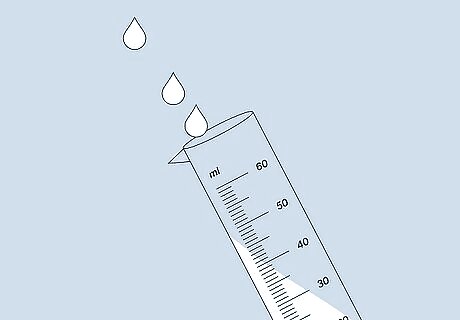
Add water to a graduated cylinder. Choose a graduated cylinder that the object will easily fit inside. Tilt the cylinder while pouring the water to reduce bubbles. Pour enough water in to fill the cylinder to the halfway mark.
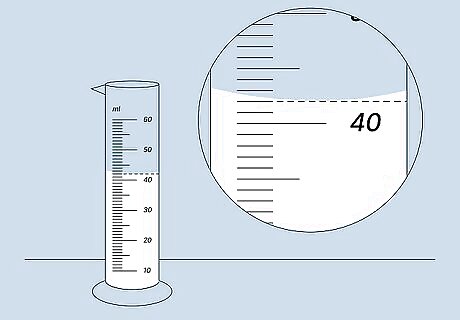
Read the meniscus. You will notice that the water is higher on the sides of the cylinder and droops slightly in the middle. This droop is known as the meniscus and is the standard point at which the water level is measured. Make sure that the cylinder is on a flat, level surface and that there are no bubbles. Look closely where the meniscus rests.
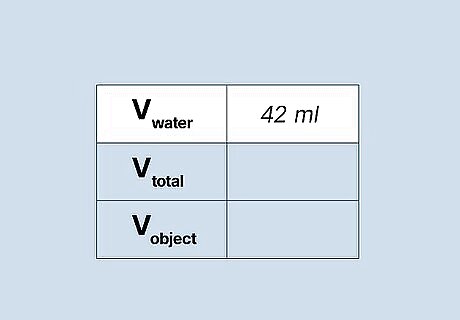
Record your measurement. It will be important to know the initial water level exactly. Write down the measurement that you took in a table or lab notebook. Your measurement will be mL.
Measuring the Final Water Level
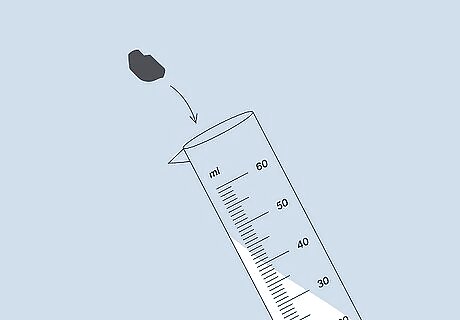
Submerge your object. Tilt the cylinder. Slide the object into the water slightly. Be sure that your object is completely submerged in the water. If there is not enough water to submerge the object, you will have to start over with more water in the cylinder.
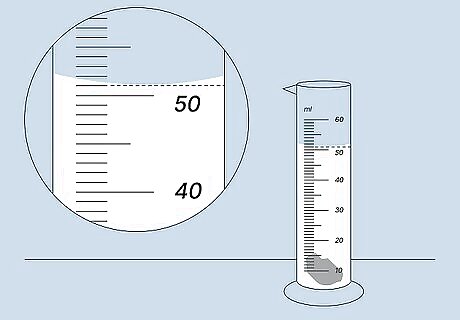
Take a new measurement. Let the object and the water settle. Make sure that the cylinder is on a flat level surface. Now look at the water level (again read the meniscus). The water level should have increased with the object being added to the cylinder.
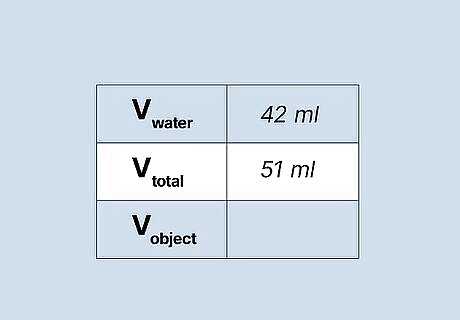
Record your final measurement. The final measurement will be just as important as the initial measurement in your calculations. It too must be precise. Write down the final water level in mL in your table or lab notebook.
Calculating the Volume of Your Object

Understand the measurements. Some people jump to the conclusion that the final reading gives them the volume of their object, but this is incorrect. The final reading is the volume of water plus the volume of your object. You will need to find the difference of the final and initial readings to know the volume of your object.
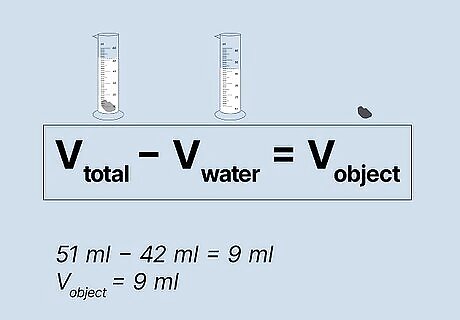
Solve for the difference between water levels. You will set up the equation Vtotal - Vwater = Vobject. Vtotal is your final measurement, Vwater is your initial measurement, and Vobject is the volume of your object. In other words, subtract the first measurement from the second to find the volume of your object.

Analyze your answer. Make sure that the volume you calculate makes sense. Obviously, you can check your calculation with a calculator. Some obvious signs of a mistake are things like your object having negative volume (this isn't possible) or a volume larger than the cylinder could hold (a volume of 30 mL cannot be measured in a 25 mL cylinder). If your answer seems wrong, you should first check your equation to make sure you did the math properly. If you did, you will have to redo the experiment and obtain new measurements. If you found a negative volume, it is likely that you simply mixed up the initial and final measurements in your equation and do not need to redo the experiment. If you obtain a number too large to be reasonable, you either made an arithmetic error or wrote down incorrect measurements. If it is the latter, you will have to redo the experiment.











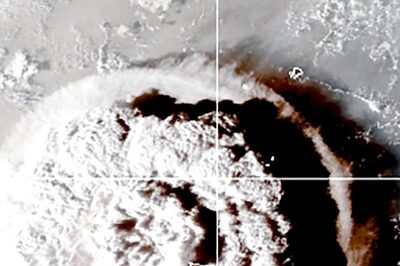





Comments
0 comment